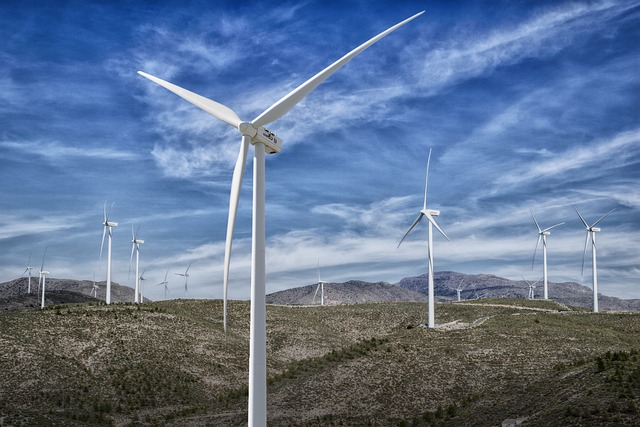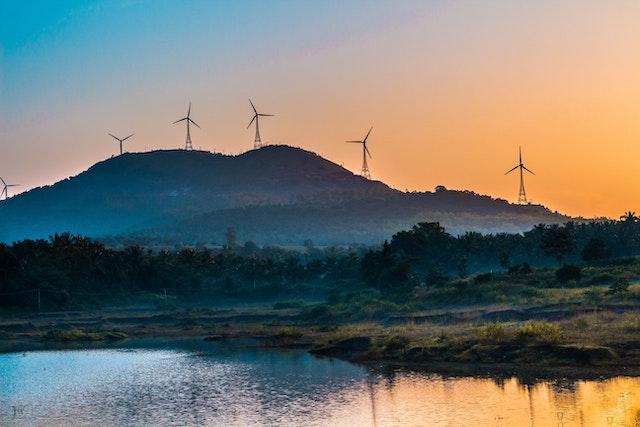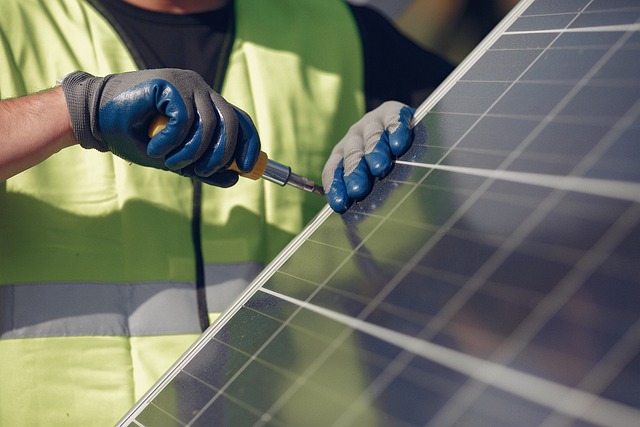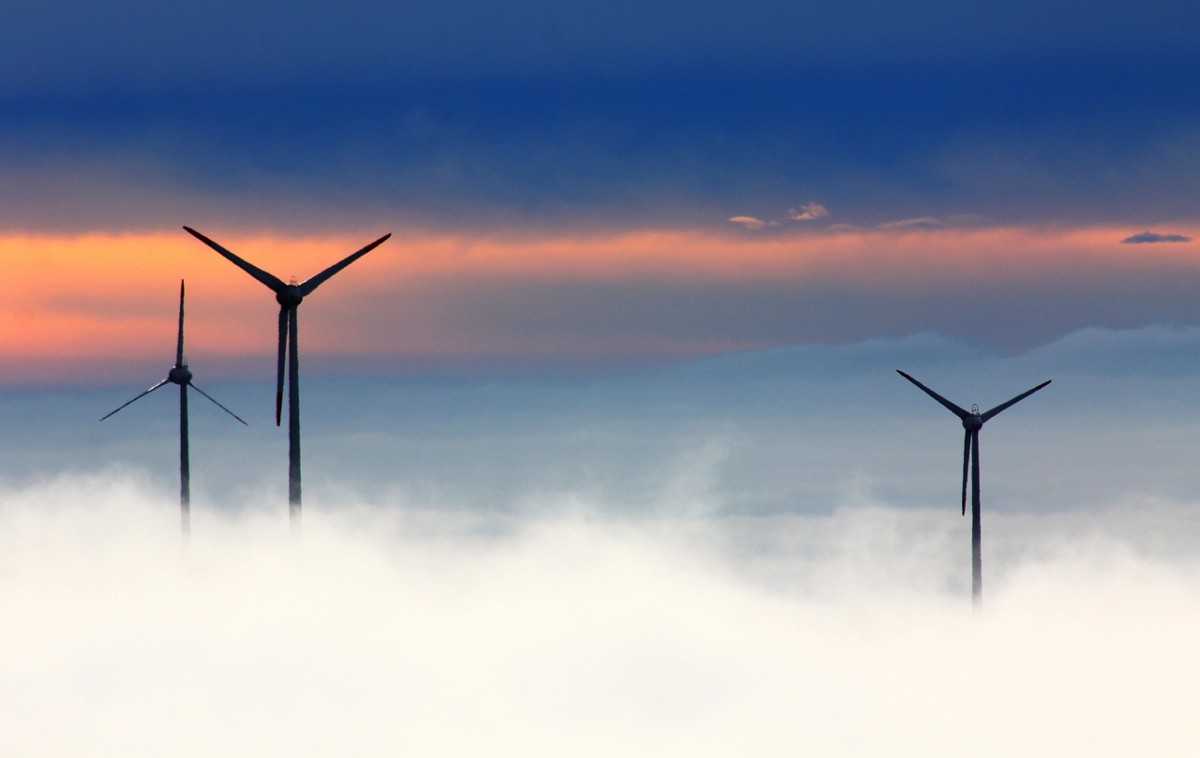India’s Renewable Energy Revolution
India is on the brink of a renewable energy revolution. This article will explore India’s renewable energy revolution.
The country has declared ambitious goals to transition from fossil fuels to clean, renewable sources of energy, and it is well on its way to making these dreams a reality.
India’s commitment to renewable energy is driven by an urgent need to reduce air pollution and combat climate change while providing access to reliable, affordable electricity for all citizens.
They are embracing clean energy and developing innovative technologies to help us enjoy a more sustainable future.
The Paris Agreement
India is a signatory to the Paris Agreement, an international agreement that was made in 2015.
The agreement involves countries pledging to reduce their greenhouse gas emissions and limit global temperature increases.
India has set itself the ambitious target of achieving 40% of its electricity from non-fossil fuel sources by 2030, as part of its commitment under the Paris Agreement.
To achieve this, India has launched several initiatives designed to modernize and expand its renewable energy capabilities.
This includes increasing investment in solar and wind energy technologies as well as developing new financing models for green infrastructure projects.
Additionally, India is also setting up dedicated training programs to ensure that there is enough trained personnel available for these new energy systems.
Through these measures, India hopes to build a more sustainable future for its citizens while also contributing to global efforts to combat climate change.
The Role of Niti Aayog
Niti Aayog is India’s premier policy think tank, established in 2015. It serves as a bridge between the central and state governments, providing an invaluable platform for collaboration between different stakeholders of the Indian economy.
Its mission is to foster cooperative federalism and to develop strategies that can help India achieve collective prosperity.
As part of its strategy, Niti Aayog has been actively promoting the adoption of renewable energy sources such as solar, wind, and biomass.
To this end, it has launched several initiatives such as Prayas – which aims to increase public understanding of renewables – and SLoCaT India – which encourages businesses to shift towards renewable energy.
Additionally, Niti Aayog works with various organizations such as UNDP and USAID to promote technological advancements in this field.
It also provides financial support for research projects related to renewable energy sources in order to encourage innovation within the sector.
The government-backed institution is also responsible for developing comprehensive plans aimed at transitioning from fossil fuels to clean energy sources by 2030.
By taking these measures, Niti Aayog hopes that India will become one of the world’s leading countries when it comes to renewable energy utilization by 2040.
What are some of the key trends in renewable energy in India?

One of the key trends in India’s renewable energy revolution is the increased use of solar energy.
Solar photovoltaics are the most popular form of renewable energy in India, with over 15 GW installed capacity and a projected 53 GW by 2022.
The government’s goal for solar power generation has been set at 100GW by 2022. Government incentives, such as tax holidays and subsidies, have helped make this goal achievable.
Additionally, private investments from international companies have also been instrumental in driving growth in the sector.
Another major trend is wind energy. While it wasn’t popular until recently, it now accounts for over 32 GW of installed capacity and the government has set a goal to reach 60 GW by 2022.
Wind turbines are being deployed across remote villages and cities alike that can be used to power homes or small businesses with cheaper electricity than conventional sources like coal-fired power plants.
Additionally, offshore wind farms are also beginning to be established along India’s coastline as well as in other locations around the country that could provide an even greater potential for generating clean electricity from wind resources.
Finally, biomass is another important source of renewable energy that is being increasingly tapped into by rural communities across India.
That rely on wood or agricultural waste as their primary source of fuel for cooking and heating needs due to a lack of access to traditional fuels like gas or kerosene.
Which may be expensive or unavailable due to price fluctuations caused by supply constraints or natural disasters.
Prime Minister Narendra Modi has been instrumental in driving India’s renewable energy revolution. In 2015, he announced the ambitious target of achieving 175 gigawatts (GW) of renewable energy capacity by 2022.
Since then, the country has seen steady progress in this direction, with total installed capacity reaching 105 GW and solar power alone accounting for nearly 36 GW.
To help accelerate the implementation of clean energy projects, the government has come up with a series of policy initiatives such as financial incentives for solar power developers and tax breaks for companies investing in renewable energy technologies.
Additionally, Prime Minister Modi also launched the world’s largest public-private partnership program called ‘Net Metering’ which is aimed at increasing rooftop solar installations across India.
The program allows citizens to generate their own electricity through rooftop panels and sell any surplus to their utility company at predetermined rates.
This initiative has been widely praised by experts as it enables households to become self-sustaining producers of clean energy while reducing their reliance on traditional grid sources.
India’s energy consumption

India’s energy consumption is dominated by fossil fuels such as coal and oil. In 2019, the total primary energy supply was 681.2 million tons of oil equivalent, with three-quarters coming from non-renewable resources.
Coal accounts for 58% of India’s total commercial energy production, making it the largest contributor to India’s emissions.
Oil accounts for another 33%, while natural gas makes up 8%. Renewable sources account for just 5% of India’s primary energy supply.
Although hydroelectricity is a major source of renewable power generation in India, other renewables such as solar and wind have seen substantial growth over the past decade.
Solar power capacity has increased tenfold since 2010 to 37 gigawatts (GW), while wind power capacity has grown fivefold to 36 GW in 2019.
Government policies aimed at increasing renewable energy production are expected to further accelerate this trend in the near future, helping reduce dependence on fossil fuels and lower emissions significantly in the long run.
Electricity demand in India has been steadily increasing since the 21st century. This is due to a combination of rising incomes and population growth, as well as the country’s rapid urbanization.
In 2017, India added about 66 gigawatts (GW) of new electricity capacity, which was higher than any other country in the world.
The majority of this came from renewable sources such as wind and solar power. In the same year, the Indian government set an ambitious target of achieving 175 GW of installed renewable energy capacity by 2022 — a goal that many experts believe will be achieved ahead of schedule.
As a result, renewables are becoming increasingly important for meeting India’s growing electricity needs.
Not only are they cleaner and more sustainable than fossil fuels, but they also provide cost-effective solutions for meeting peak electricity demand during times when traditional sources cannot keep up with demand.
Additionally, emerging technologies such as energy storage systems can help further reduce strain on the grid by storing excess energy during off-peak times and releasing it during peak periods.
All these factors make renewable energy an attractive option for powering India’s future growth in electricity demand.
India’s Ambitious Renewable Energy Targets

India’s renewable energy ambitions are bold and far-reaching. The country has set a goal of achieving 175 gigawatts (GW) of installed capacity by 2022 – an ambitious target, given that only around 70 GW of renewable energy had been installed in the country as of 2020.
India also aims to have 40 percent of its total electricity generation from non-fossil fuel sources by 2030.
To achieve this, the government is implementing various policies and measures to increase investments in renewables and create an enabling environment for developers.
These include tax benefits, capital subsidies, and feed-in tariffs that guarantee prices for renewable energy producers.
Additionally, the government is offering easy financing options such as bonds and loans to help developers fund their projects.
The country’s renewable energy sector is booming as a result of these efforts. According to the International Renewable Energy Agency (IRENA), India added a record 6.2 GW of solar in 2018, making it the world’s top market for this technology.
Finally, it is providing technical assistance through training programs and knowledge-sharing initiatives to build capacity within the sector.
Exploring India’s Increasing Solar Power Capacity
India is making great strides in renewable energy. In particular, the country has seen a surge in solar power capacity over the past decade.
As of 2020, India has installed 39 GW of solar power and aims to install 100 GW by 2022. This is a hugely ambitious target for any nation, but especially for India which still relies heavily on coal for electricity generation.
The government of India is taking several steps to promote the expansion of solar power capacity across the nation.
To begin with, they are providing various incentives and subsidies to encourage private investment in renewable energy projects.
Furthermore, they are also implementing innovative policies such as mandating rooftop solar installations and connecting rural areas directly with grid-connected solar plants.
Additionally, they are providing access to affordable financing options such as loans and venture capital funds to help make these projects feasible.
In addition to these efforts from the government, Indian businesses have stepped up their game too.
Many companies now provide easy-to-use online platforms that allow users to compare different types of solar panels or even buy them outright at competitive prices.
This has been incredibly helpful in driving down costs and accelerating the adoption of this technology across India.
While it may be a bit premature to say that India is a model for growth in solar energy, there are definite signs of this being the case.
In 2016, global solar power capacity surpassed 100 GW for the first time, with India accounting for nearly 10% of that total.
Solar parks are a key component of India’s renewable energy revolution.
These large-scale solar power plants offer the potential of generating clean, sustainable energy on a much larger scale than rooftop solar systems.
Solar parks provide many advantages over traditional methods of power generation including lower emissions and reduced fuel costs.
Additionally, solar parks dramatically reduce the cost of electricity due to their large size and economies of scale.
This makes them particularly attractive for industrial and commercial users as well as residential customers looking to save money on their electric bills.
The Indian government has been quick to recognize the potential for solar parks in India, having established various initiatives.
Such as the Jawaharlal Nehru National Solar Mission in 2010 which set ambitious targets for capacity expansion across the country.
So far, there are currently several dozen operational solar parks with more planned or under construction across India’s states and territories, including Gujarat, Rajasthan, Madhya Pradesh, and Andhra Pradesh.
The majority of these projects are built on unused land or other vacant areas such as reservoirs or coastal zones.
And often utilize technologies like tracking systems that enable greater efficiency by allowing panels to follow the sun throughout its daily arc in order to maximize output.
With greater investment coming into this sector from both domestic & international investors alike, it looks like India’s renewable energy revolution will be powered by an ever-increasing number of reliable & efficient solar parks in years to come!
The Importance of Solar Cells
Solar cells are an important part of India’s renewable energy revolution. Solar cells convert sunlight directly into electrical power, making them a clean and efficient source of electricity.
In the past few years, India has made significant advances in solar energy production, with capacity now exceeding 35 GW and plans to reach 100 GW by 2022.
This growth is largely due to a combination of government policies and incentives, as well as the falling cost of solar photovoltaic technology.
To further facilitate this growth, the Indian government has launched several ambitious programs.
Such as ‘Smiling Sun’, which provides technical assistance for setting up small-scale solar units; ‘Grid Connected Rooftop Solar Power Plants’; ‘State Rooftop Solar Policy’ to promote rooftop projects.
And ‘KUSUM Scheme’ for farmers to install standalone or grid-connected solar pumps.
Additionally, India’s National Solar Mission aims to reduce import dependency while also achieving grid parity with conventional sources of energy by 2020.
Such efforts are expected to have a positive impact on India’s renewable energy revolution in the coming years.
Wind Power in India: A Growing Force

India is rapidly increasing its renewable energy capacity, and wind power is playing a major role in this revolution.
Over the past decade, India has seen exponential growth in wind-generated electricity and it now stands as the fifth-largest producer of wind power in the world.
With more than 37 gigawatts (GW) of installed capacity, India is investing heavily to become one of the leading countries in this sector.
The government has set a target to have 60 GW of installed wind energy capacity by 2022, representing an increase of nearly 50% on current levels.
To support this ambitious goal, several initiatives have been taken at various levels to ensure that sufficient resources are made available for such investments.
For example, tax benefits are being provided to incentivize private sector companies to invest in wind projects; public-private partnerships have been established.
And feed-in tariffs are also being implemented to encourage investment from both domestic and international sources.
In addition, research institutions such as the Indian Wind Turbine Manufacturers Association (IWTMA) are working closely with industry experts to develop new technologies.
Which can help improve efficiency and reduce costs associated with setting up new projects or retrofitting existing ones.
The IWTMA also acts as a facilitator between government bodies, project developers, and manufacturers so that all stakeholders can benefit from each other’s expertise.
All these efforts combined will lead India toward becoming a global leader in renewable energy production over the coming years.
The United States is a leader in renewable energy technology, as evidenced by its investment in solar, wind, and hydropower.
The US is the world’s largest producer of electricity from these sources, with more than 50% of the nation’s electricity coming from renewable sources.
Over the past decade, the US has been increasing its focus on renewable energy and investing heavily in research and development to improve existing technologies and create new ones.
This focus has resulted in a rapid expansion of the nation’s renewable energy infrastructure and capabilities.
In 2019 alone, over 8 gigawatts (GW) of renewable capacity was added to America’s grid. This included 10 GW of solar power installations.
A record year for solar additions in the country – along with 5 GW of wind capacity added to generate clean electricity.
The US also continues to expand its use of hydropower as well adding 4 GW since 2017.
With these investments, it appears that America will remain at the forefront of global efforts toward clean energy production for years to come.
India is making significant strides in its renewable energy efforts, with an ambitious target of 175 GW of clean energy capacity by 2022.
To achieve this goal, the country has taken several steps to increase the share of renewables like solar and wind power in its energy mix.
In addition to these two renewable energy sources, India is also increasing its focus on other forms of renewable energy such as hydroelectricity and biomass-based electricity.
The government has set up various policies and incentives to encourage private companies to invest in the development of these sources.
Furthermore, it is also encouraging public-private partnerships (PPPs) for large-scale projects which will help realize the target quicker.
Additionally, India is setting aside a substantial amount of money for research and development into new technologies that can improve efficiency.
And reduce costs associated with renewables like storage solutions for intermittent sources like wind or solar power.
With all these measures in place, it appears that India’s renewable revolution is well underway and will only continue to make progress in the years ahead.
The Benefits of India’s Renewable Energy Revolution

India’s renewable energy revolution is one of the most ambitious and successful initiatives in recent years.
The country has set a target to generate 175 gigawatts (GW) of electricity from renewable sources by 2022 and is well on its way to achieving this goal.
This revolution has brought numerous benefits to India, ranging from improved air quality to increased job opportunities.
The use of renewable energy can significantly reduce air pollution caused by burning fossil fuels like coal and oil for power generation.
In addition, the implementation of solar panels results in reduced water consumption, as no water needs to be used for cooling purposes as it does for coal-fired power plants.
These two factors are especially important for India which suffers from some of the highest levels of air pollution in the world.
The shift towards renewables also creates jobs directly in the installation and maintenance sectors connected with these projects.
Moreover, research suggests that investments in renewables create more jobs than those created by traditional sources such as coal or nuclear power plants due to the higher capital intensity associated with them.
This could help improve job prospects within India while providing clean energy at the same time.
Economic growth is essential for India’s economic development and social progress. Renewable energy is a key component of this growth.
As it can provide access to clean and affordable energy sources that are better for the environment.
In addition, renewable energy has the potential to reduce poverty in rural areas by enabling communities to generate their own power.
The government of India has taken steps to promote renewable energy projects, such as providing incentives for solar and wind farms.
Increasing funding for research and development, and introducing policies that encourage private sector investments in renewables.
This has resulted in significant increases in the country’s renewable energy capacity.
As of 2020, more than 40% of India’s total installed electricity capacity was from renewable sources.
An impressive achievement given the country’s relatively low starting point in 2009.
Such positive developments promise to bring about immense benefits not only to India but also to other countries around the world.
Challenges Faced by India’s Renewable Energy Revolution
One of the greatest challenges facing India’s renewable energy revolution is a lack of infrastructure to support it.
In order for the country to become more reliant on renewable sources, an extensive grid-based system needs to be implemented in order to handle the increasing demand and distribution of electricity.
This requires large investments in both money and time, which can be difficult for a developing nation like India.
Additionally, there are issues with land availability due to population density, as well as challenges posed by natural disasters that can disrupt energy production.
Another issue is inadequate financing options.
Private investment in renewable energy projects can be hard to acquire due to low returns or high risks associated with them.
As a result, government initiatives have been put into place such as providing tax incentives and subsidies for those investing in renewable energy projects.
However, this has not been enough to attract sufficient private investment leading many projects to remain stalled or abandoned altogether.
Furthermore, some state governments are reluctant to provide long-term contracts.
Or pay the higher rates needed for these projects making them even less attractive from an economic point of view.
Finally, there is also a lack of public awareness regarding alternative sources of energy and how they will benefit society in the long run.
Until people start recognizing the importance of shifting towards renewables for their daily lives, adoption will remain low.
And progress toward achieving alternative source goals may face significant delays or obstacles along the way.
Looking Ahead: What Lies in Store for India’s Clean Energy Future?

As India continues to transition towards a cleaner energy future, it is essential to look ahead and understand what lies in store.
In the short term, the focus must be on increasing India’s renewable energy capacity.
This will require large investments in solar, wind, and other renewable sources of energy generation.
The government has already taken some steps in this direction such as providing tax benefits for companies investing in clean energy projects.
And setting up long-term financing vehicles for renewable projects.
Additionally, it is important to develop efficient storage solutions that can help store excess electricity.
Generated from renewables during peak hours and make it available during off-peak hours or times of slow demand.
In the medium to long term, India needs to invest heavily in research and development so that new technologies can be developed which are more cost-effective than existing ones.
For example, there should be a greater focus on improving battery technology so that it can last longer and become more affordable over time.
Furthermore, building smart grids will also play an important role in managing the transition towards more sustainable energy sources.
Since they allow for better integration of various types of distributed energy sources into national grids as well as facilitate exchanges between grids located within different parts of the country.
India has been making tremendous strides in its energy transition journey.
The country is now the third largest producer of renewable energy, having installed nearly 78 GW of renewable capacity by 2018.
This includes solar PV, wind power, biomass, and small hydroelectric projects. The government is further aiming to reach 175 GW of renewable energy capacity by 2022.
To meet this ambitious goal, India is counting on a suite of policy measures.
Such as the National Solar Mission and various state-level incentives to help facilitate private investment into the sector.
Furthermore, public-private partnerships are being developed to build new projects while existing ones are being optimized to ensure maximum efficiency in their operations.
In addition to these initiatives, India’s grid infrastructure is also being upgraded with Smart Grid technologies.
That will be able to manage high levels of intermittent electricity supplied by renewables more effectively.
These developments have enabled India’s electric grid to become greener and more reliable over time while also improving access for millions who have previously lacked it.
Electric Vehicles In India
Electric vehicles (EVs) are becoming increasingly popular in India as part of the country’s renewable energy revolution.
EVs are powered by electricity instead of fossil fuels, and they can be powered by solar energy, wind energy, or even more traditional sources like hydropower.
In addition to being a clean source of transportation, EVs offer many other economic benefits: they cost less to maintain than gasoline-powered vehicles.
And the fuel costs of EVs can be significantly lower when compared to their gasoline counterparts over time.
Furthermore, electric vehicles are much quieter than conventional cars and produce zero emissions.
The Indian government has taken steps towards incentivizing the growth of electric vehicle use in India with tax incentives for those who purchase one.
Moreover, there is a growing network of charging stations throughout the country that make it easier for EV owners to top up their batteries while they’re on the go.
With all these advantages in mind, it’s no wonder why electric vehicles have become so attractive in India’s renewable energy revolution—they provide an efficient and affordable way to get around without having to impact the environment.
Please share this article, thank you.
Recent Posts
Wind Energy and Its Economic Benefits for Local Communities Firstly wind energy has emerged as a powerful driver of economic development, particularly in local communities. It provides a...
Potential Energy in a Spring: Understanding the Fundamentals
Potential Energy in a Spring Firstly, understanding the potential energy in a spring is fundamental to grasping how energy is stored and transferred in various physical systems. Springs, as...


